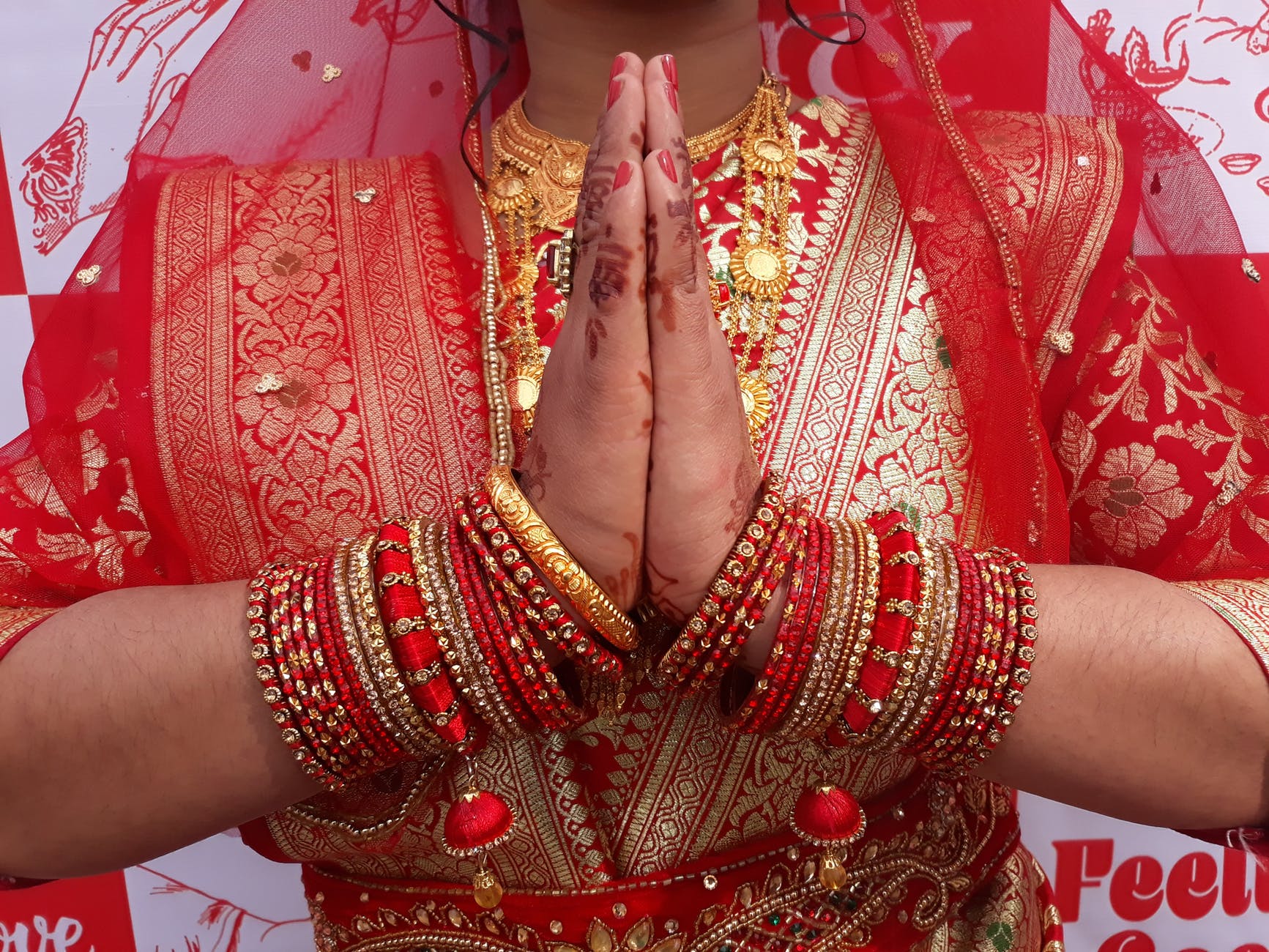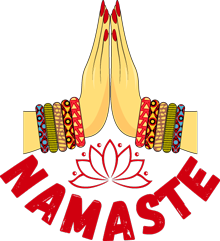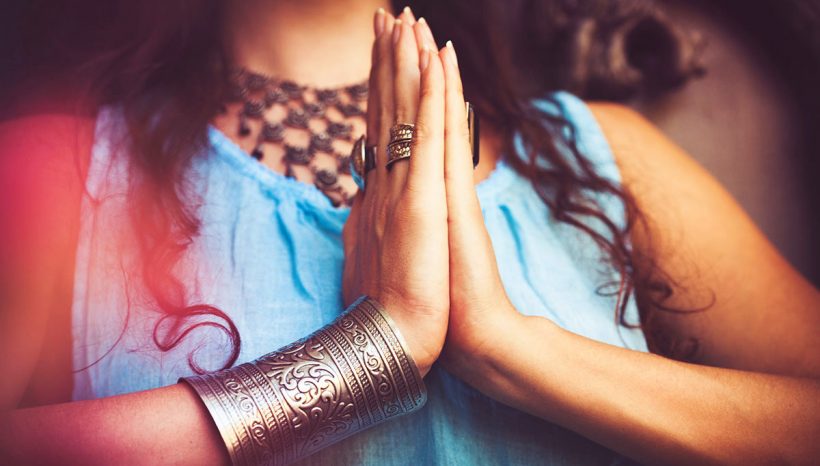What does namaste mean in yoga
What is meant by "namaste"? You may use this word without really knowing what it means! If you do yoga, you will almost certainly hear it at the end of each class. Literally, the word can be translated as : "the divine in me bows before the divine in you".
"Namaste" is a bit like hello, but with a mark of respect. In fact, namaste is not just a word from yoga jargon.
DEFINITION OF NAMASTE
The word can be divided into several parts: thus 'Nama' means 'Hello' and 'you' means 'you'. Put them together, and namaste means 'greeting for you'. By extension, namaste means "I bow before you".
This gesture is seen as a person bowing forward with both hands together. Holding both hands together closest to the heart chakra indicates the prayer position. Moving the hands toward the center in front of the teacher (or yogi) is a way to thank the teacher for the practice.
NOT TO CONFUSE NAMASTÉ AND NAMASKAR
You may have heard people say namaskar in yoga classes. Namaskaara translates as "greeting", kaara translates as "doing". So it translates as "I do my greetings". It can be said that namaskar, is more commonly used to greet many people, while namasté is more closely associated with greeting an individual for a personal divine salute.
THE SPIRITUAL MEANING OF NAMASTE
"When your mind is completely withdrawn into superconsciousness, it becomes centered in the bliss of the spine. You are then in your idea body, or causal body. This is the level of the soul."
When one person greets another with the feeling that he is "paying homage to the soul of the other", a ring of spiritual emotion is created within him. The Namaste creates vibrations to the one who receives the gesture, it is a loop of bliss to transmit positive energy to the one who receives the gesture. It is said that heart centers and chakras connect during the divine saying.

THE NAMASTE IN YOGA
Namaste is the salvation used in yoga. It is a gesture that sends a message of peaceful spirituality to the universe in the hope of receiving a positive message in return. Most practitioners say namaste as a way to thank the teacher.
It is a way of recognizing that we are all equal. During the yoga class, we work hard to find hard inside; but at the end of the class, and before continuing our day in front of the rest of the world, namaste is like a "relay" to take what we have learned on the mat with us to share it.
When to do Namaste?
Ideally, it should be done at the beginning and end of the class. Usually this is done at the end of the class because the mind is less active and the energy in the room is more peaceful. The teacher initiates the Namaste as a symbol of gratitude and respect for his students and his own teachers and, in return, invites the students to connect with their lineage.

HOW TO MAKE THE GESTURE OF NAMASTE?

To perform the Namaste, place your hands together on the heart chakra, close your eyes and bow your head. It can also be done by placing the hands together in front of the third eye, tilting the head, and then lowering the hands down to the heart. This is a particularly deep form of respect. Although in the West the word "namaste" is usually pronounced in conjunction with the gesture, in India it is understood that the gesture itself means Namaste, and therefore it is not necessary to say the word while bowing.
Hands are gathered at the heart chakra to increase the flow of divine love. Bowing the head and closing the eyes helps the mind to surrender to the Divine in the heart. One can do a Namaste to oneself as a meditation technique to go deeper into the heart chakra; when one does it with someone else, it is also a beautiful meditation, though quick.
For a teacher and a student, Namaste allows two individuals to come together energetically in a place of connection and timelessness, free from the bonds of ego-connection. If this is done with a deep feeling in the heart and with the mind surrendered, a deep union of minds can blossom.
APPLY NAMASTE AS A PRINCIPLE OF LIFE
The Namaste can truly help you change the way you behave in everyday situations. It creates a deep union of our minds. Think of it as a moment of inner peace, which can reverberate outwardly and surprise you by dissolving tensions or conflicts in other areas of your life.
The Namaste sends messages of peace to the universe. Your friends, family members and even co-workers can receive your sense of gratitude. If you find it hard to believe that this can happen, remember how easy it is to feel depressed after hanging out with a friend whose attitude is totally negative.
Namaste can also improve your relationships. Remember that saying "I bow down to you," or Namaste, expresses to someone that you really see them for who they are. And that extra attention can make them feel special. The next time you meet someone, I encourage you to do it with all your heart. Take a moment to look the person in the eye and be truly aware that you see the person beyond the physical.
It's completely different from saying "hello" to a co-worker or spending the day talking to a friend while constantly checking your phone. You are there with them in the moment, and nowhere else. The ultimate gift we can give each other is our full presence.

THREE THINGS TO REMEMBER FOR YOUR NEXT NAMASTE
It is important to create a "circle of spiritual connection" while saying namaste. The exuded positive energy creates the auric field of positive spiritual power. Second, the absence of physical contact is what creates a more positive aura. If contact is made, the chances of passing negativity increase. When there is no physical contact, the chances of contact are minimized.
Finally, don't forget to place your fingers gently against each other and simply touch the pattern, shape and texture with your fingertips.
Namaste is a thank you to the world created and around us. The "divine in me honors the divine in you" refers to the spiritual transference of the word. Honor the individual who is honored by your presence.


